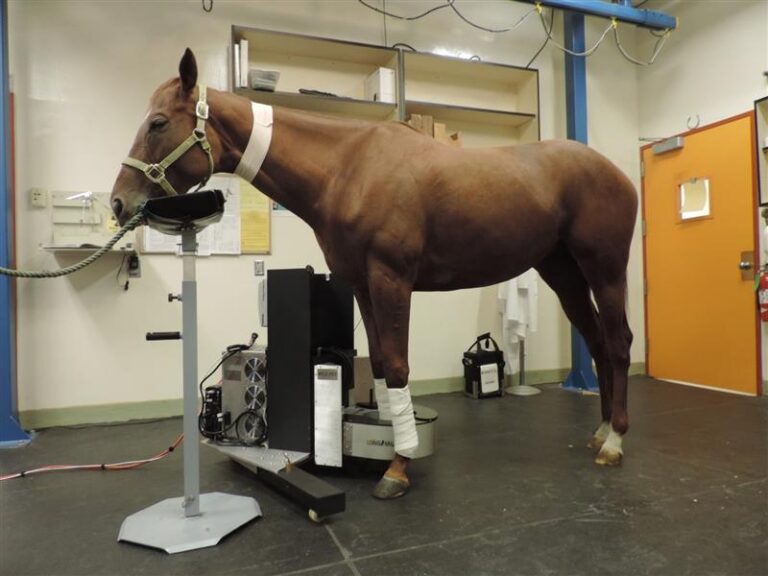
In this episode, Sarah Cohen, DVM, discussed the role of the permitted treating veterinarian (PTV) at FEI competitions, especially with regard to current discussions around social license to operate. She talked about the differences between a PTV and an official veterinarian, how conversations about social license are influencing discussions within the FEI and USEF, what’s involved in the trot-up process, and what it’s like to work as a holding box veterinarian.
What Is a Permitted Treating Veterinarian?
The PTV is allowed work on horses in the FEI secured stabling area during an FEI show. They might be responsible for administering intravenous or injectable joint therapies. PTVs must pass a test every three years to ensure they are knowledgeable about FEI rules and regulations.
PTVs differ from official veterinarians, who supervise the PTVs, manage the jog, and oversee any other veterinary issues that arise during the competition.
Equine Welfare and the Evolving Role of the PTV
With many current discussions surrounding social license in horse sports, the role of the PTV is likely to evolve in coming years. “As veterinarians, as trainers, as horse owners, we need to be prioritizing welfare not just from inside our sport, but from the outside and how it looks to people who are not inside our sport,” said Cohen. “And we, as horse show veterinarians, have to be at the forefront of making good decisions for the horses that are competing.”
Cohen said many committees through the FEI, USEF, and USHJA are currently working to address welfare within competitions. “That said, it still comes down to decision making that not only the veterinarian has to make, but also the rider,” she said. “And these decisions have to continue to be made with the horse’s welfare as the absolute priority.”
Cohen said there are ongoing discussions about this issue within the FEI and USEF, especially following the death of a horse at the World Cup Finals earlier this year, which generated much discussion about who’s allowed to administer medications to horses. She believes changes will occur in the next couple of years.
“Something that I noticed was signage on the treatment stalls this summer at the horse show here in Traverse City, Michigan, which said that veterinarians are administering medications to horses at their own liability,” she said. “I think that the FEI and USEF are going to be looking very closely in the coming months as to what medications make sense to be administered to horses in the preceding days to competitions.”
FEI Jog and Holding Box
One important process currently in place to protect horses competing at FEI events is the jog, during which riders present their horses in front of a ground jury to check for unsoundness.
If the horse looks questionably sound, it is sent to the holding box, where the holding box veterinarian is allowed to apply hoof testers, palpate a limb, and perform passive flexions (they are not allowed to have the horse trot off from the flexion test). The holding box veterinarian then relays their findings, and the horse is either deemed fit to be presented for another jog or not fit to compete.
Farrier intervention is allowed between the holding box veterinarian’s assessment and the rejog. In some situations, Cohen has encountered horses with long toes that simply needed a trim to address a mechanical problem. However, she recalls another situation where the jog caught a soft tissue injury the rider didn’t know about.
“The bottom line is that this is all for the horse’s welfare and also for the rider’s welfare, because nobody wants to be riding around on a horse that’s not feeling 100%,” Cohen said.
Final Thoughts
“Being a PTV in the States is an honor and a privilege to be able to work on horses of this caliber,” Cohen said. She has also had the opportunity to go overseas with teams, which she described as a rewarding opportunity. She said working as a horse show veterinarian is a great way to get experience and meet amazing horses.
Anyone who is interested in learning how to become a PTV can contact Cohen at cohendvm@equity-performance.com.
About Dr. Sarah Cohen
Sarah Cohen, DVM, grew up in New Jersey showing in the hunters and equitation before attending Purdue University for her undergraduate training. She graduated from Ross University in 2007, having completed her clinical training at Iowa State University. Cohen then joined Merritt and Associates Equine Hospital outside Chicago for a one-year intensive internship. She joined Miller & Associates in 2008 and finally launched Equity Performance Equine in the fall of 2020. Over her decade-plus in practice, Cohen has developed a client base consisting of some the most well-regarded in the hunter and show jumping community. Cohen believes passionately in evidence-based medicine and putting the horse’s needs at the fore of all decisions. Since 2010 she has been a regular on the international scene serving as the USEF show jumping team veterinarian in competitions in Belgium, France, Slovakia, Spain, Wellington, and other international competition locales. She is a past president of the Northeast Association of Equine Practitioners, having served on the Board of Directors for six years. She is a member of the USHJA’s Horse and Rider Advocates Committee and speaks regularly at conferences on equine sports medicine. She lives in Wellington, Florida, and spends her summers in Traverse City, Michigan.
Related Reading
- Disease Du Jour: Regulatory Veterinary Medicine for Horses
- Disease Du Jour: Importing Horses to the U.S.
- AAEP Health Coverage: Prevalence of Lameness in FEI Horses and Its Correlation to Performance
Stay in the know! Sign up for EquiManagement’s FREE weekly newsletters to get the latest equine research, disease alerts, and vet practice updates delivered straight to your inbox.







